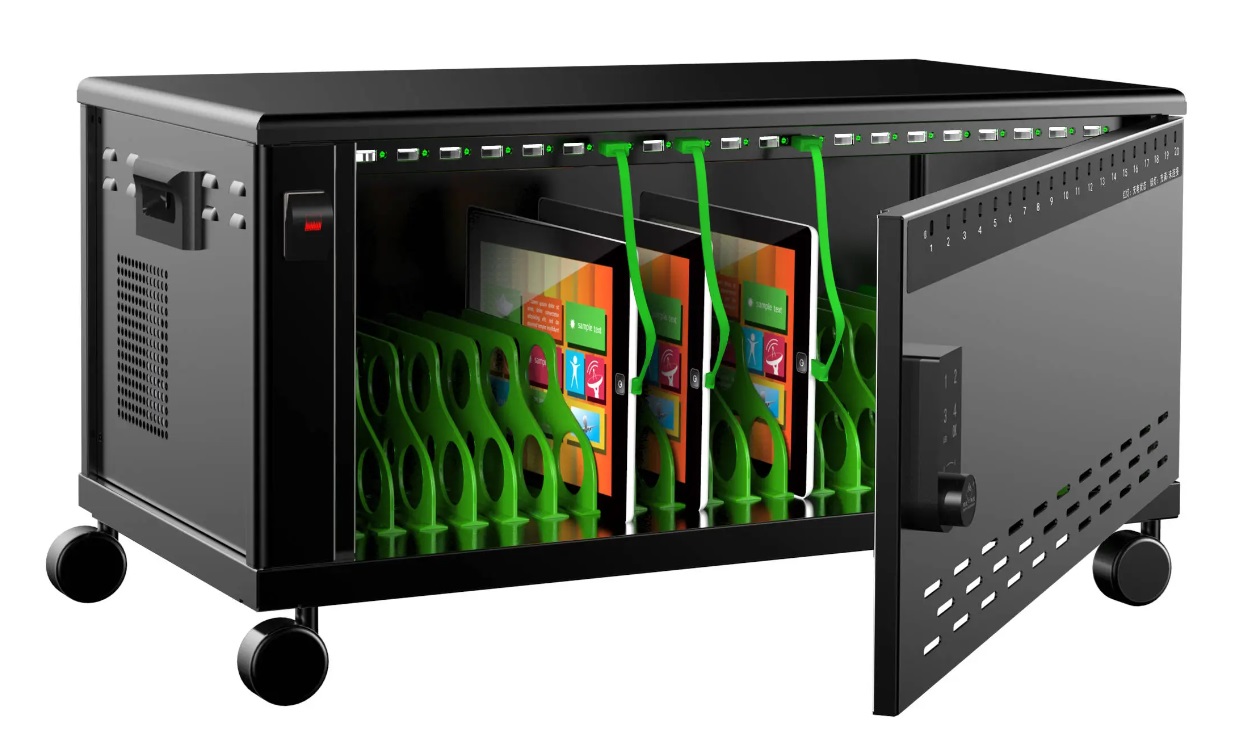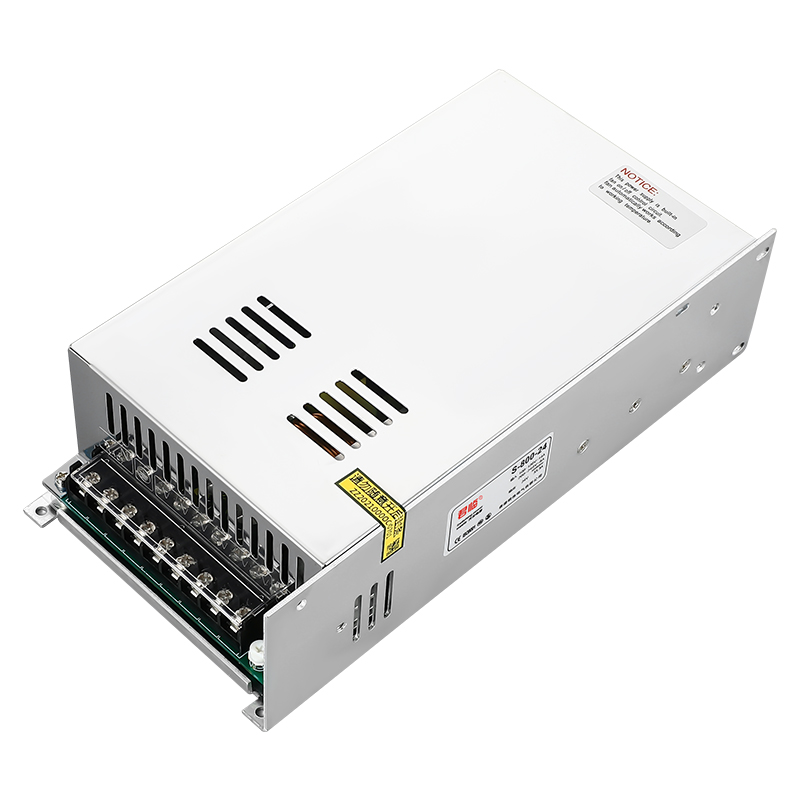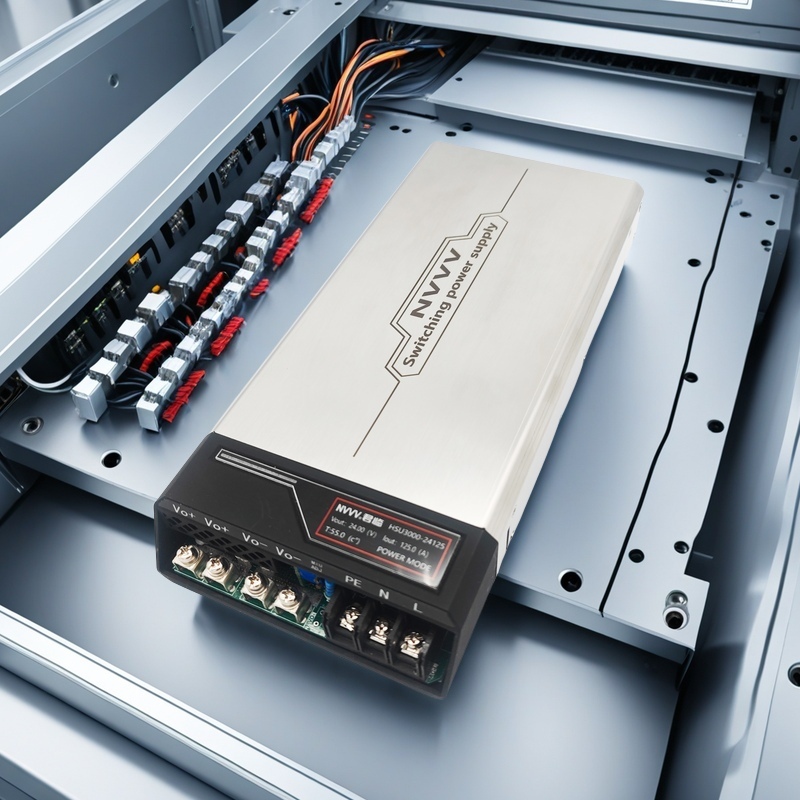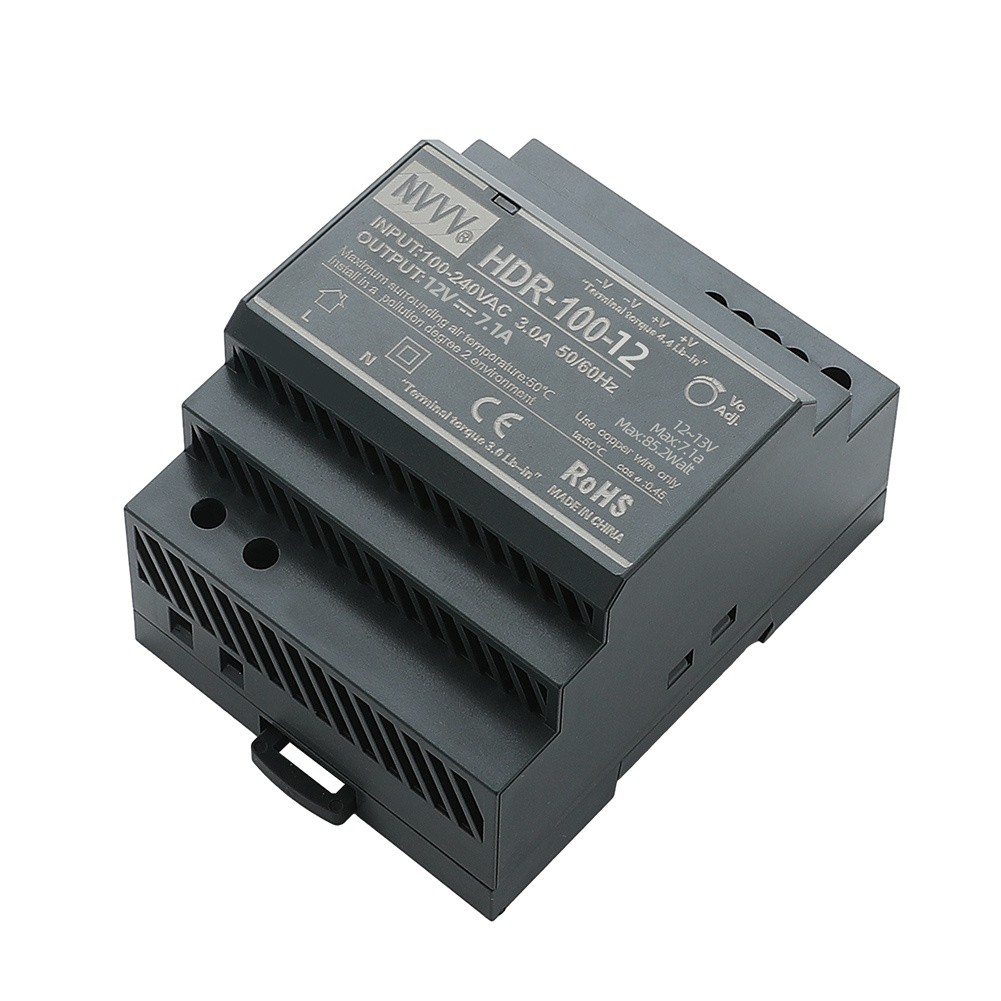SMPS Full Form - Detailed Information about SMPS
In our daily life and work, whether it is a laptop for learning, a 3D printer for creative production, or automated equipment in agricultural production, it is inseparable from the support of electricity. Behind these devices, the efficient and stable power supply device - SMPS (Switching Power Supply) is often silently working. As an important part of modern power conversion technology, SMPS can not only provide stable power output in various environments, but also has been widely used in various industries with its compact size and high efficiency. Today, let us take a deep look at SMPS and explore how it supports the power needs of all aspects of our lives behind the seemingly complex technical principles.
What is SMPS?
SMPS, the full name of which is "Switch Mode Power Supply", is an electronic power supply device that converts electrical energy into a specific voltage and current. Unlike traditional linear power supplies, SMPS uses high-frequency switching technology to regulate and convert electrical energy, thereby achieving efficient and stable power output. It is widely used in modern electronic devices and can provide the required power for various types of devices. Whether in home, industrial or school environments, SMPS plays a vital role.
The reason why SMPS is widely used is mainly due to its high efficiency and flexibility. Traditional linear power supplies use transformers to convert voltage at lower frequencies, so they are less efficient in high-power scenarios and are prone to generate a lot of heat, resulting in energy waste. SMPS can significantly improve energy efficiency while reducing volume and weight by converting voltage at high frequencies. In addition, SMPS can flexibly adjust the output voltage and current according to the needs of different devices, thereby meeting the requirements of various application scenarios.
In practical applications, SMPS is widely used to power computers, communication equipment, industrial control systems, household appliances, etc. Whether in high-power industrial equipment or in small household appliances (24vdc power supply is more commonly used), SMPS can provide a stable and reliable power supply. Its high efficiency and low loss characteristics make it an ideal power solution for modern electronic devices.
What does SMPS consist of?
The internal structure of SMPS is relatively complex and consists of multiple functional modules, which work together to ensure efficient conversion and stable output of power. Generally speaking, the basic structure of SMPS includes the following main parts:
Input filter
The input filter is mainly used to filter out electromagnetic interference and high-frequency noise at the input end of the power supply to ensure the stability of the power supply input. It is usually composed of inductors and capacitors, which can effectively reduce the interference of clutter in the power grid and avoid affecting the subsequent circuits.
Rectification and filtering circuit
The input AC power is converted into DC power through the rectification circuit, and the pulsation component is eliminated through the filtering circuit to obtain smooth DC power. The rectification and filtering circuit is the basis of SMPS, ensuring that the subsequent circuit can obtain stable DC input.
High-frequency switch
The high-frequency switch is the core component of SMPS, which adjusts the output voltage by switching current at high speed. High-frequency switches are usually implemented by power transistors (such as MOSFET), and the amount of electrical energy transferred is adjusted by controlling the on and off time of the switch. The efficiency of the high-frequency switch directly affects the performance of the entire SMPS, so special attention should be paid to the selection and control of the switch during design.
Transformer
The transformer in the SMPS is different from the transformer in the traditional power supply. It works in a high-frequency environment and can achieve voltage increase or decrease in a smaller volume. High-frequency transformers not only reduce the size and weight, but also improve the efficiency of energy transmission.
Output rectification and filtering circuit
The high-frequency AC output of the transformer needs to be rectified and filtered to convert it into a stable DC output. This part of the circuit is similar to the rectification and filtering of the input part, but the specific requirements of the output voltage and current need to be considered to ensure that the final output power meets the equipment requirements.
Feedback and control circuit
The feedback circuit is used to monitor the output voltage and current, and feed the data back to the control circuit. The control circuit adjusts the working state of the high-frequency switch according to the feedback signal to ensure the stability of the output voltage. This closed-loop control system is the key to SMPS to achieve high-precision voltage regulation.
Protection circuit
In order to ensure that SMPS can operate safely under abnormal conditions such as overload, short circuit, overheating, etc., protection circuits are essential. Common protection measures include overcurrent protection, overvoltage protection, and overtemperature protection. When an abnormal situation occurs, the protection circuit will immediately cut off the power supply to prevent equipment damage.
In general, the structural design of SMPS is compact and highly integrated, and each module works together to ensure efficient and stable output of the power supply. It is precisely because of this structural advantage that SMPS has become the mainstream choice in many application scenarios.
What is the working principle of SMPS?
The working principle of SMPS is based on high-frequency switching technology, which regulates and converts electrical energy by rapidly switching current. Unlike traditional linear power supplies, the operating frequency of SMPS is usually between tens of kilohertz and hundreds of kilohertz. This high-frequency working mode enables it to achieve voltage conversion while greatly reducing energy loss. Let us introduce the working principle of SMPS in detail below.
AC-DC conversion
Switching power supply usually obtains electrical energy from the AC power grid, and first converts AC power into DC power through a rectifier. This process is called AC-DC conversion, and its purpose is to provide a stable DC input for subsequent circuits. The rectified DC power also has a certain fluctuation component, so it needs to be further smoothed through a filter to obtain pure DC power.
High-frequency switch modulation
After obtaining DC power, the high-frequency switch of SMPS starts to work. The switch is turned on and off at a high frequency, "cutting" the DC power into high-frequency pulses. By adjusting the duty cycle of these pulses (that is, the ratio of on time to off time), the output voltage can be precisely controlled. High-frequency switching modulation is the key to SMPS's efficient voltage conversion.
High-frequency transformer isolation and conversion
High-frequency pulse signals are isolated and converted through high-frequency transformers. Transformers can not only increase or decrease voltage, but also provide electrical isolation to ensure safe isolation between the output and input ends. Due to the characteristics of high-frequency signals, the size and weight of transformers can be greatly reduced, which is one of the reasons why SMPS is lighter than traditional power supplies.
Rectification and filtering
The high-frequency AC power converted by the transformer needs to be rectified again by the rectifier, and the pulsation component is removed by the filter to finally obtain a stable DC output. This part of the output is directly supplied to the target device, and its voltage and current are required to meet the working requirements of the device.
Feedback and control
The feedback system in SMPS is responsible for real-time monitoring of the output voltage and current to ensure stable output. If the output voltage fluctuates, the feedback circuit will pass the signal to the control circuit to adjust the duty cycle of the high-frequency switch, thereby quickly correcting the voltage deviation. Through this closed-loop control, SMPS can maintain stable output under various load conditions.
Through the above steps, switching mode power supply achieves efficient power conversion. Its working principle is simple and effective, making it widely used in various electronic devices. Due to the characteristics of high-frequency operation, SMPS not only has high efficiency, but also can integrate more functions in a smaller volume, meeting the needs of modern electronic devices for high-performance power supply.
What are the advantages of SMPS?
Compared with traditional linear power supplies, SMPS has many unique advantages in performance and application, which makes it widely used in modern electronic devices. The following are several major advantages of SMPS in practical applications:
High efficiency conversion
The efficiency of SMPS is usually between 85% and 95%, while the efficiency of traditional linear power supplies is usually only 60% to 70%. This high efficiency is due to the fact that SMPS converts power at high frequency, reducing energy loss during transformation and rectification. For devices that run for a long time, the high efficiency of SMPS can significantly reduce energy consumption and save electricity bills.
Small size and light weight
Because SMPS works at high frequency, the size of its internal transformer and inductor can be greatly reduced. This makes SMPS more compact than traditional power supplies and suitable for space-constrained devices. Whether in desktop electronic devices, portable devices or industrial equipment, SMPS can provide high power density power solutions.
Wide voltage range input
SMPS can adapt to a wider input voltage range, which makes it particularly good in areas with large grid voltage fluctuations. For example, SMPS can stably output the set voltage when the input voltage changes from 90V to 260V, which is crucial for the safe and stable operation of the equipment.
Strong stability
SMPS has strong load regulation capabilities, and it can maintain stable output voltage and current regardless of light or heavy loads. This is especially important for equipment with high requirements for power stability, such as communication equipment, medical equipment, etc.
Multiple protection functions
SMPS is usually equipped with multiple protection measures, including overcurrent protection, overvoltage protection, short circuit protection and overtemperature protection. When an abnormal situation occurs, the protection circuit can respond quickly to avoid equipment damage or safety accidents. This reliable protection mechanism allows SMPS to be used safely in various complex environments.
Strong anti-electromagnetic interference ability
SMPS can effectively reduce the electromagnetic interference generated by itself through design and filtering technology, and can also resist external electromagnetic interference to ensure the purity of power output. This is essential for the normal operation of electronic equipment, especially in application scenarios with high requirements for electromagnetic compatibility, SMPS performs particularly well.
Low cost
With the advancement of technology and the popularization of large-scale production, the manufacturing cost of SMPS has been greatly reduced. Compared with the early linear power supply, SMPS not only has better performance, but also more competitive price, becoming the mainstream choice in the market.
In general, the advantages of SMPS in efficiency, volume, stability and safety have made it widely used in modern electronic devices. Whether it is a personal device or an industrial application, SMPS can provide users with reliable and efficient power support.
What are the common applications of SMPS?
Due to its high efficiency, stability and flexibility, SMPS has been widely used in many fields. The following are typical applications of SMPS in some specific devices:
School network laptop charging cabinet
With the development of educational informatization, more and more schools are equipped with laptops for students and centrally manage the charging needs of these devices. SMPS is widely used in charging cabinets and can provide stable power supply for multiple laptops at the same time. Its high efficiency and multi-channel output capabilities enable the charging cabinet to quickly charge the device while avoiding overload and power loss. The safety protection function of SMPS also ensures the safety of students during use.
3D printers
3D printers have high requirements for power supply during operation, especially when heating nozzles, hot beds and driving stepper motors, stable power supply is essential. SMPS is widely used in desktop 3D printers because it can provide efficient and stable 24V voltage output. It not only improves the heating speed and reduces the printing preparation time, but also maintains voltage stability during long-term printing to ensure consistent printing results.
Embroidery machine
In the textile industry, embroidery machines need to accurately control the speed of the motor and the movement of the needle and thread. The stability of the power supply is directly related to the quality of embroidery. SMPS is an ideal choice for embroidery machine power supply because of its stable output and good anti-interference ability. By using switched mode power supply, embroidery machines can maintain consistent performance when running at high frequencies, reducing errors and downtime in production.
Watering machine
In the agricultural field, automatic irrigation systems are becoming more and more popular. These systems usually require a stable power supply to drive water pumps, control valves and sensors. The application of SMPS in irrigation machines can provide a stable 24V power supply for the system, ensuring that the equipment can operate normally in complex outdoor environments. At the same time, the multiple protection functions of SMPS can prevent circuit failures caused by power grid fluctuations or weather changes, and improve the reliability of agricultural production.
Conclusion
Through a deep understanding of SMPS, we can see that this power supply device is not only efficient, stable and flexible, but also particularly important because of its wide application in many fields. From educational equipment to industrial control, SMPS has become an indispensable core technology for modern power supply. It provides a steady stream of power for various electronic devices we use in daily life through efficient energy conversion. In the future, with the further advancement of technology, switched-mode power supply will demonstrate its strong adaptability and reliability in a wider range of application scenarios, providing a more stable power guarantee for our lives and work.












